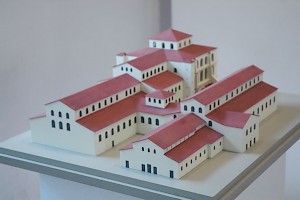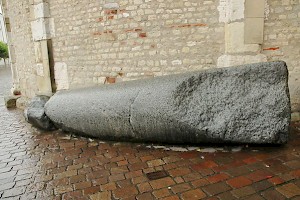Trier, Cathedral
Augusta Treverorum: important Roman city, modern Trier.

The present Dom (Cathedral) and Liebfrauenkirche (church of Our Dear lady of Trier are built on very ancient foundations. The two churches date back to the reign of Constantine I the Great (306-337); in c.380, a large, square building (the "Quadratbau") was added to the Cathedral. It was an immense complex, occupying almost two blocks of the gridiron map of the city.

There is not much to be seen of the original buildings, which are below the twin medieval churches. However, at the entrance of the cathedral (the northern church), you can still see a large, damaged column of grey granite, which must have been imported from Egypt by an emperor who ruled in both Gallia Belgica and Egypt - which can only have been Constantine the Great. It may be deduced that the ancient Cathedral must have been a splendid monument, and this impression is certainly confirmed by the mosaics that have been excavated.

In 2002, archaeologists have discovered that underneath the Liebfrauenkirche are third-century houses. In one of these was a small hall (about 10 x 6 meter) with an apse this may have been an unofficial church, because the church was later built right on top of it. It was also established that Constantine expanded this church to the west and to the north, where the second church was built, which became the Cathedral. Between the twin churches was a Baptistery. The greatest discovery was Fausta's Fresco.
It was also discovered that the Quadratbau was already began in the 340s, but was abandoned in c.350. This suggests that it was founded by the emperor Constans, who ruled in Gaul until 350, but was dethroned by Magnentius. The project was finished by Valentinian I and Gratian.
The churches were destroyed during the fifth century, and rebuilt on a more modest scale by the sixth-century bishop Nicetius.